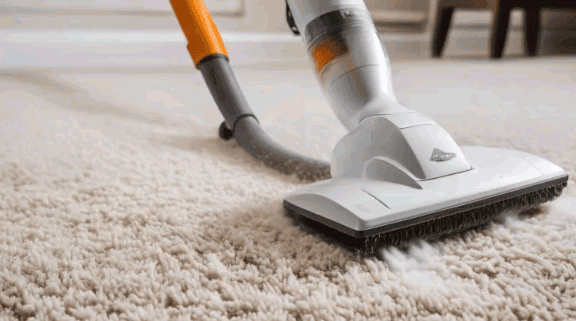
Steam cleaning carpets is a popular method for deep cleaning and removing stubborn stains. It not only provides a thorough cleaning but also kills germs and bacteria in carpet fibers.
But is steam cleaning safe for all types of carpets? We discuss the benefits of steam cleaning, the equipment needed, and how to prepare and carry out the process effectively.
Discover all about steam cleaning carpets and how you can achieve a fresh and clean home!
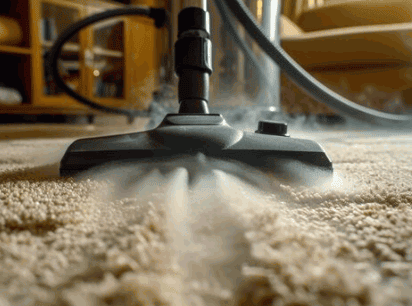
What Is Steam Cleaning Carpets?
Table of Contents
Steam cleaning carpets is a method of deep cleaning that utilises the power of high-temperature steam to remove dirt, stains, and bacteria from carpet fibres.
One of the key benefits of using steam cleaning for carpets is its effectiveness in removing embedded allergens, bacteria, and odours that may be lurking deep within the carpet fibres. The high temperatures generated by the steam not only help to break down and dislodge stubborn dirt and stains but also have the added advantage of sanitising the carpet without the need for harsh chemicals, making it a more eco-friendly option.
Take a look: How To Clean Carpet At Home DIY
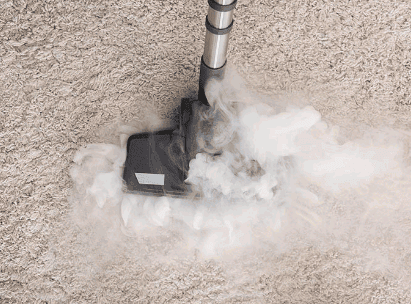
How Does Steam Cleaning Work?
Steam cleaning works by using a steam cleaner machine that heats water to a high temperature to produce dry steam vapour, which is then applied to the carpet fibres to sanitise and clean them effectively.
This high-temperature dry steam vapour generated by the steam cleaner not only helps to loosen and dissolve deep-seated dirt and stains within the carpet fibres but also plays a crucial role in killing germs, bacteria, and allergens present in the carpet. The combination of high heat and pressure in steam cleaning not only provides a thorough cleaning experience but also ensures that the carpet's appearance and texture are maintained, leaving it fresh, sanitised, and looking revitalised.
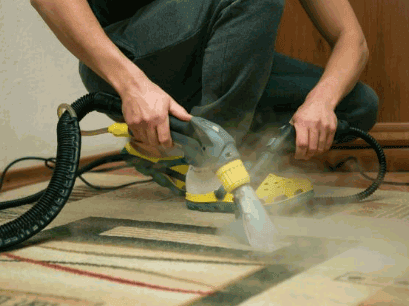
What Are The Benefits Of Steam Cleaning Carpets?
Steam cleaning carpets offers various benefits such as deep cleaning that reaches the carpet pile, removing stubborn stains effectively, and killing germs and bacteria that may be lurking in the fibres.
One of the key advantages of utilising steam cleaning for carpets is improved indoor air quality. By utilising the strength of high-temperature steam, this method effectively eliminates allergens, dust, and pet dander that often accumulate within the carpet fibres. Unlike traditional cleaning techniques, steam cleaning doesn't rely on harsh chemicals, making it a safer option for both residents and the environment.
Deep Cleaning
Deep cleaning through steam cleaning penetrates the carpet fibres, lifting embedded dirt and grime to restore the carpet's freshness and appearance.
This method essentially involves the use of hot water and powerful suction to extract allergens, debris, and bacteria hidden within the carpet weave. As the steam infiltrates the fibres, it effectively breaks down stubborn stains and sanitises the surface, eliminating germs and odours. The high temperatures produced during the steam cleaning process kill dust mites and other microscopic pests that may have taken residence in the carpet. The outcome is not just visual cleanliness, but also a healthier indoor environment for inhabitants.
Removes Stubborn Stains
Steam cleaning is highly effective in removing stubborn stains from carpets, ensuring a thorough and complete stain-removal process.
Common stains that steam cleaning can address include wine spills, pet accidents, grease marks, and mud tracks. For wine spills, a mixture of warm water and washing-up liquid can be effective, while enzyme-based cleaners work well for pet stains. Grease marks may require a combination of vinegar and bicarbonate of soda, and mud tracks can be tackled with a solution of water and lemon juice.
Kills Germs And Bacteria
Steam cleaning not only cleans but also sanitises carpets by killing germs and bacteria present in the fibres, creating a healthier indoor environment.
Steam cleaning is a powerful method that uses high-temperature steam to lift dirt and grime from carpet fibres without the need for harsh chemicals. The hot steam penetrates deep into the carpet, killing dust mites, bacteria, and other allergens that can trigger respiratory issues.
Steam cleaning is particularly effective in removing stubborn stains and odours, leaving carpets fresh and revitalised. Regular steam cleaning not only enhances the appearance of your carpets but also ensures a hygienic living space for you and your family.
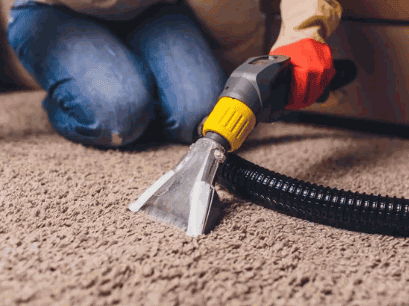
Is Steam Cleaning Safe For Carpets?
When done correctly, steam cleaning is a safe and efficient method for cleaning carpets, as it does not involve harsh chemicals that can damage the carpet fibres or pose health risks.
It is essential to understand that steam cleaning can actually be gentler on your carpets compared to traditional cleaning methods using strong chemicals. The high temperatures produced by steam can effectively kill germs, bacteria, and dust mites that may be living deep within the carpet fibres, providing a thorough cleaning.
To ensure the safety and effectiveness of steam cleaning, it is crucial to follow the manufacturer's instructions carefully. Improper use of steam cleaners, such as using too much water or leaving the carpet overly damp, can result in mould or mildew growth which can be harmful to health and damage the carpet.
What Types Of Carpets Can Be Steam Cleaned?
Most carpeted floors can benefit from steam cleaning, especially those made of durable materials that can withstand the steam and moisture without damage.
It is crucial to consider the specific type of carpet you have before opting for steam cleaning. For example, wool carpets may not be suitable for this method due to their delicate nature, while synthetic fibres like nylon and polyester are more resilient.
The pile structure of the carpet plays a vital role in determining its compatibility with steam cleaning. Low-pile carpets tend to respond well to steam, as the moisture can penetrate deeper without causing saturation issues compared to high-pile carpets.
What Types Of Carpets Should Not Be Steam Cleaned?
Delicate carpets with sensitive fibres or those that require professional cleaning methods should not be steam cleaned to avoid potential damage or adverse effects on the carpet's appearance and texture.
Instead of steam cleaning, delicate carpets often benefit from gentle hand-cleaning techniques that cater to their specific needs.
Certain types of carpets, such as antique rugs or those made from natural fibres like silk, may be easily damaged by the high heat and moisture involved in steam cleaning.
It is crucial to consult with experts in carpet cleaning, who can assess the materials and condition of the carpet to determine the most suitable cleaning method.
What Equipment Do You Need For Steam Cleaning Carpets?
To perform steam cleaning on carpets, you will need essential equipment such as a steam cleaner machine, a suitable cleaning solution, and a reliable vacuum cleaner for pre and post-cleaning maintenance.
When selecting a steam cleaner machine, it is crucial to consider features like adjustable steam settings, different nozzle attachments for various surfaces, and a large water tank capacity to minimise refill interruptions.
For the cleaning solution, opt for eco-friendly and carpet-safe products to ensure the longevity of your carpets while effectively removing dirt and stains.
A high-quality vacuum cleaner plays a vital role in the process as it helps remove loose debris and pet hair before steam cleaning and also aids in faster drying post-cleaning.
Steam Cleaner
The steam cleaner is the primary equipment used in steam cleaning carpets, as it generates high-temperature steam to clean and sanitize the carpet fibers effectively.
One of the key features of a steam cleaner is its versatility with various nozzle attachments, which allow you to tailor the steam flow for different cleaning tasks. From a concentrated jet nozzle for stubborn stains to a wide brush attachment for larger areas, these nozzles make the cleaning process efficient and thorough.
Water filters are another essential component of a steam cleaner, ensuring that only pure steam is emitted during the cleaning process. This not only enhances the cleaning results but also prevents any mineral deposits or impurities from damaging the carpet fibers.
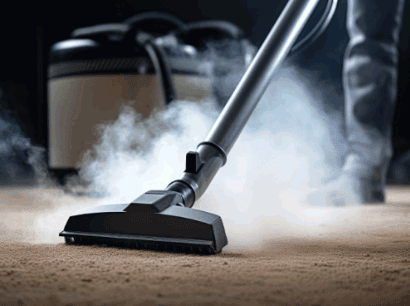
Cleaning Solution
A suitable cleaning solution is essential for steam cleaning carpets, as it helps in breaking down stains and dirt while sanitising the carpet fibres for a thorough cleaning process.
In terms of selecting the right cleaning solution for steam cleaning, one must consider the formulation's ability to effectively tackle tough stains and grime.
- Formula 212 is a popular choice among professional cleaners for its powerful cleaning properties and compatibility with high-heat steam machines.
The high-heat steam not only aids in loosening stubborn dirt but also helps in killing germs and bacteria, making the cleaning process more hygienic and efficient.
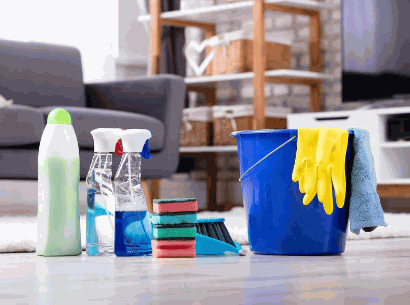
Vacuum Cleaner
A hoover is necessary for pre-cleaning the carpet to remove surface dust and debris before steam cleaning, as well as for post-cleaning to ensure proper drying and maintenance of the carpeted area.
In the pre-cleaning phase, the hoover plays a crucial role in loosening and extracting dirt that lies deep within the carpet fibres, making the steam cleaning process more effective. By eliminating larger particles before steam cleaning, the Hoover ensures that the hot water extraction method can target embedded dirt and grime more efficiently.
After the steam cleaning process, the hoover comes in handy for post-cleaning duties, such as speeding up the carpet's drying time by removing excess moisture. This step not only prevents mould and mildew growth but also helps in maintaining the freshly cleaned appearance of the carpet.
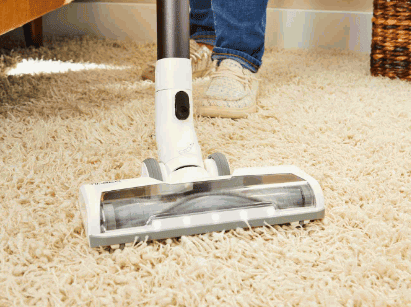
How To Prepare For Steam Cleaning Carpets?
Before steam cleaning carpets, it is essential to prepare the area by vacuuming the carpet, pre-treating any stubborn stains, and moving furniture to ensure easy access to the entire carpeted space.
- Start by thoroughly vacuuming the entire carpeted area to remove loose dirt and debris that could interfere with the steam cleaning process.
- Next, conduct a spot check on the carpet to identify any specific stains that may require targeted treatment. Use appropriate carpet cleaners or solutions to pre-treat these stains before beginning the steam cleaning process.
- For common stains like coffee spills or pet accidents, a mixture of white vinegar and water can be effective in breaking down the stain before steam cleaning.
- Ensure proper air circulation in the room by opening windows or using fans to aid in the drying process post-cleaning. This will help prevent mould and mildew growth in the damp carpet fibres.
Vacuum The Carpet
Vacuuming the carpet thoroughly before steam cleaning helps remove surface dust, dirt, and debris, ensuring a cleaner and more effective deep cleaning process.
In terms of maintaining the cleanliness and longevity of your carpets, the preliminary step of vacuuming should not be underestimated. Eliminating the visible particles can prevent them from embedding deeper into the carpet fibers during the steam cleaning process. This initial action not only improves the overall appearance of the carpet but also enhances the efficiency of the subsequent deep cleaning treatment.
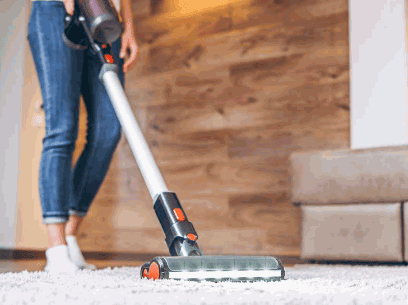
Pre-Treat Stains
Pre-treating stubborn stains with a suitable cleaning solution and employing the right technique can help in loosening the stains and preparing them for effective removal during the steam cleaning process.
When dealing with oily stains like grease or food, using a degreasing agent or dish soap can be highly effective. For protein-based stains such as blood or urine, enzymatic cleaners work wonders. Vinegar and water are a versatile solution for many stains, while hydrogen peroxide can tackle tough organic stains. It's crucial to always perform a patch test on an inconspicuous area to ensure the solution doesn't cause any damage or discoloration on the fabric.
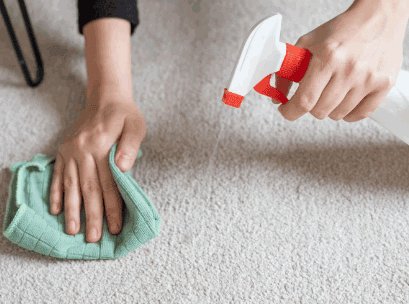
Move Furniture
Moving furniture from the carpeted area before steam cleaning is crucial to ensure complete access to all carpeted surfaces and to prevent any hindrances during the cleaning process.
By relocating furniture before beginning the steam cleaning process, you allow the cleaning solution to reach every corner and crevice of the carpet, ensuring a thorough and effective cleanse. This step not only aids in achieving a spotless finish but also extends the lifespan of your carpet by eliminating dirt and debris that might have accumulated under heavy furniture.
To make the chore of moving furniture easier, consider creating a layout plan for each room and categorising furniture based on weight and size. This strategic approach not only streamlines the relocation process but also helps in maximising the cleaning area by grouping furniture efficiently.
When rearranging furniture post-cleaning, prioritise high-traffic areas such as living rooms and hallways to maintain the freshness and cleanliness of these spaces. Remember to use furniture sliders or pads to prevent any damage to the freshly cleaned carpet and effortlessly move heavy items back into place.
What Are The Steps For Steam Cleaning Carpets?
The process of steam cleaning carpets involves several essential steps, starting from testing the cleaning solution to filling the steam cleaner, performing the cleaning, and allowing the carpet to dry completely.
Once the cleaning solution is tested on an inconspicuous area to ensure it doesn't damage the carpet, it's time to prepare the steam cleaner. Make sure to follow the manufacturer's instructions on how to fill the reservoir with water and the proper proportion of cleaning solution. When starting the actual cleaning process, move the steam cleaner slowly in a back-and-forth motion to ensure thorough cleaning. Remember, proper ventilation is crucial during steaming to prevent moisture build-up. After the cleaning, allow the carpet to dry completely before returning furniture and foot traffic to the area.
Test The Cleaning Solution
Before proceeding with steam cleaning, it is crucial to test the cleaning solution on a small, inconspicuous area of the carpet to ensure compatibility and avoid any adverse reactions or damage.
Conducting a spot test is a simple yet essential step in the cleaning process. Start by diluting the cleaning solution according to the manufacturer's instructions. Apply a small amount of the solution on the test area using a clean cloth or sponge, making sure to blot rather than rub.
After application, wait for a few minutes to observe any discolouration or changes in texture. If there are no adverse effects, proceed with confidence to clean the rest of the carpet using the same solution and technique.
Fill The Steam Cleaner With Water And Solution
To start the steam cleaning process, fill the steam cleaner's reservoir with the appropriate amount of water and the recommended cleaning solution, following the manufacturer's instructions for optimal performance.
Ensuring that the right water-to-solution ratio is key to achieving effective cleaning outcomes without damaging the equipment. Once the reservoir is filled, make sure to securely close it to prevent any leaks during operation.
Before turning on the steam cleaner, double-check that all the necessary attachments are securely connected and in good condition. This includes the nozzles, hoses, and any additional tools or brushes that may be required for specific cleaning tasks.
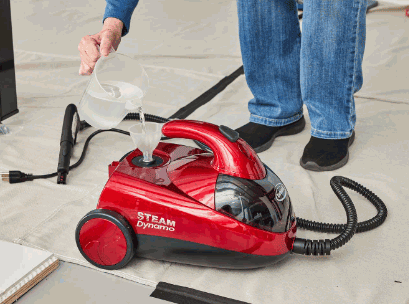
Begin Steam Cleaning
Once the steam cleaner is filled and ready, start the steam cleaning process by moving the equipment methodically across the carpeted area, ensuring even coverage and thorough cleaning.
It is crucial to maintain a steady pace when manoeuvring the steam cleaner to prevent over-saturation or incomplete cleaning. Consistent steam pressure is key to effectively breaking down dirt and stains embedded in the carpet fibres.
When making your passes, overlap each strip slightly to ensure that no areas are missed. Be mindful of corners and edges, as these areas often require extra attention to remove built-up grime.
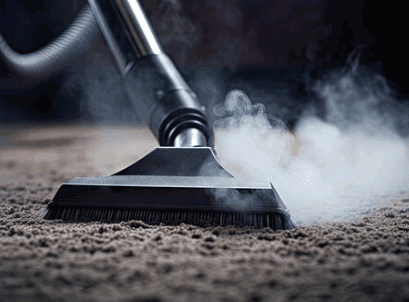
Let The Carpet Dry
After steam cleaning, allow the carpet to dry completely by ensuring adequate ventilation, and air circulation, and possibly using fans or open windows to speed up the drying process.
Properly drying your carpet post-steam cleaning is crucial not only for the appearance but also for maintaining a healthy indoor environment. Quick drying helps prevent mould and mildew growth, which can be harmful to your health and cause damage to your carpet.
One effective tip is to avoid walking on the damp carpet to prevent any dirt or oils from transferring onto it, which can extend the drying time. Lifting furniture off the carpet or placing foil under furniture legs can help prevent colour transfer and reduce drying time.